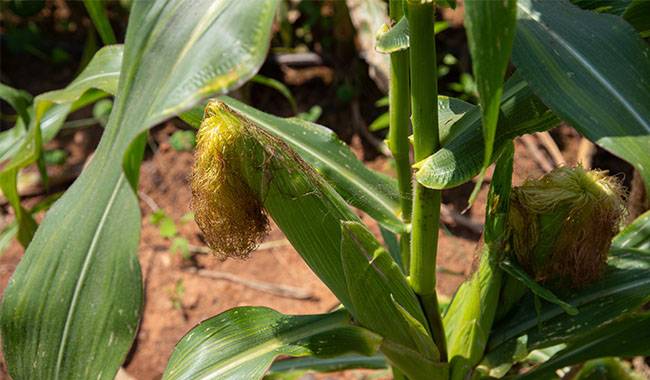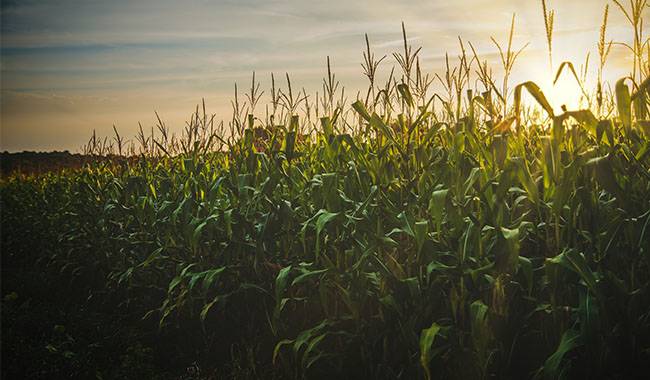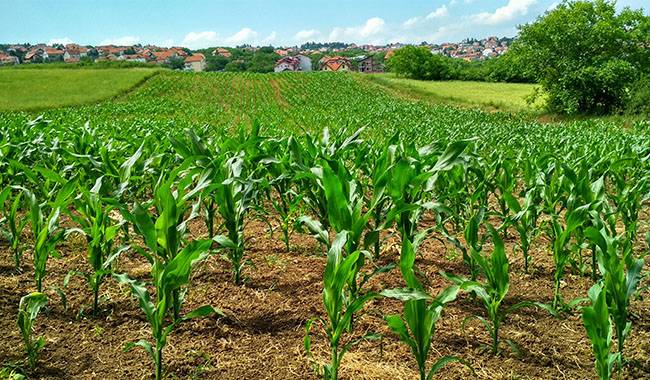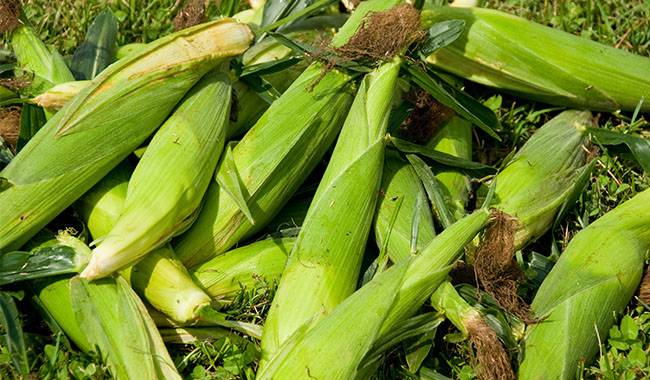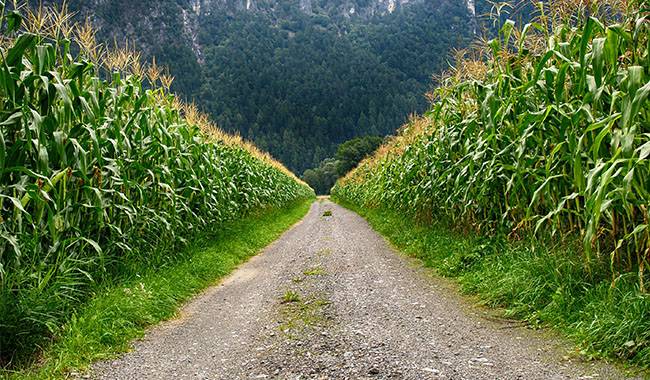
Corn is one of the most popular vegetables to grow and eat, and it’s even more delicious when harvested fresh. To get the taste of fresh corn, you should grow by your own.
If you are wondering why corn is called a vegetable here and not a grain, it is because corn in its fresh form is considered a vegetable. Grain is usually defined as a monocotyledonous plant grown for its mature seeds .
So how to take care of corn, this article will answers to you.
UNDERSTANDING THE WHOLE PROCESS OF CORN GROWTH
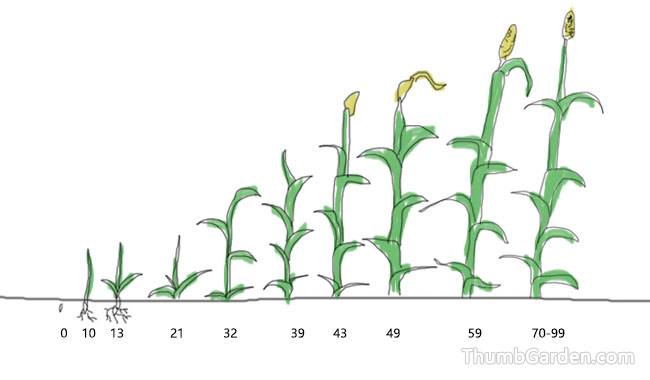
SOWING PERIOD
The sowing period is the time from when the corn seeds are planted until the seedlings grow bai 2 to 3 leaves.
The sowing period of corn is not greatly related to the variety, but varies by a few days at most, and is mainly influenced by weather and moisture.
The normal time from sowing to seedling emergence is in half a month, but sometimes the rain is not enough and the weather is dry, which very much affects the emergence time.
SEEDLING STAGE
The seedling stage is the period when corn seedlings grow taller, mainly the stage from emergence to plucking, this time period has sufficient light, abundant rainfall, and timely fertilization, the root system, leaves, and stalks nodes of corn differentiation will be completed better.
At this stage, pay more attention to whether the corn seedlings emerge uniformly and the stems and branches are strong, so as to produce strong corn seedlings of relatively uniform height and thickness.
EARING STAGE
The earing stage is one of the most important periods in the growth process of corn, where plant growth and reproductive growth go hand in hand.
This is the period when corn seedlings are pulling out nodes and the male ears are flowering, so it is important to seal the rows quickly and manage them well, because this period determines the harvest of corn this year, the number of ears, the size of the ears, and the number of ears of grain is formed at this time.
GRAIN STAGE
The flowering period of corn is the time of flowering and growing kernels, as we say. If the fertilizer and water supply during this period is sufficient and there is strong sunlight, corn will flower more and the kernels will be full.
Therefore, the main work in this period is to weed, water, and fertilize to ensure high yield.
RIPENING PERIOD
The maturity of corn is the last stage of the corn’s life, and once this stage arrives, it means that the harvest is about to be bountiful. How to tell when the corn is fully mature is to look at the bracts outside the cob and the leaves of the corn plant.
If the bracts are completely yellow and somewhat loose, and there are 1 or 2 leaves of the corn plant that are green, it means that the cob is ripe and ready for picking.
THE MATURE SIZE OF THE PLANT
The size of corn plants will vary depending on the type of corn you plant and the growing conditions, but most corn plants average 6-8 feet.
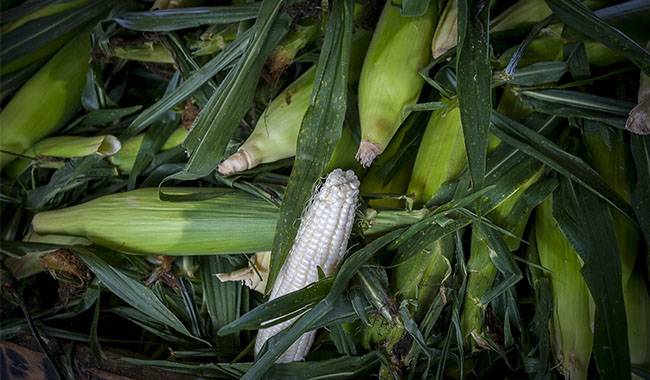
SUNLIGHT
In order to grow well and fill your ears, your corn needs a place where it can get plenty of sunlight.
DAYS TO HARVEST
The day of maturity depends on the variety you are growing. It can be anywhere from 65-90 days.
You can extend the harvest time of your corn by planting 2 or 3 different varieties that mature at different times.
HARVESTING CORN
The conventional wisdom is to harvest your corn the day before the raccoons do. Seriously, look for chubby dark green ears with brown tassels.
Squeeze to test for firmness and around, not pointed tip. The final test is to pierce the kernel with your fingernail. If it spurts a milky white liquid, it’s ready.
CORN PLANTING TIPS
Planting corn is usually done by direct seeding after all the danger of frost has passed. Since corn is wind-pollinated, it works best when planted in blocks rather than in rows.
Pollen from male tassels needs to be in contact with female silk, and planting off means more contact.
SEED STORAGE
Wind pollination can also lead to cross-pollination, so separate different types of corn by at least 25 feet or plant varieties that mature at different times.
SOIL
Soil should be loose, neutral pH (6.0-7.0). Heavy soils inhibit the growth of corn roots.
The shallow roots you will see at the soil surface are mainly where the taller plants are anchored.
SWEET CORN IS A LONG SEASON CROP
Plant varieties that mature at different rates in order to extend the harvest period. You can expect to have one or two ears of corn per plant.
FERTILIZER AND FODDER
Corn is a heavy feeder that requires fertile soil.
Nitrogen is especially important because corn is essentially a grass. The Native American practice of burying fish heads with corn seed is a practical means of supplementing nitrogen.
An inch or two of compost or decaying manure can also work, as can feeding with fish milk. Once the plants are about 8 inches tall, apply nitrogen fertilizer when they start producing tassels again.
WATERING
Water regularly, especially if you notice the leaves curling and when the corms start to swell.
Instead of drinking a little water once a week, it is best to drink once a day. Keep the area free of weeds that will compete for food and water.




